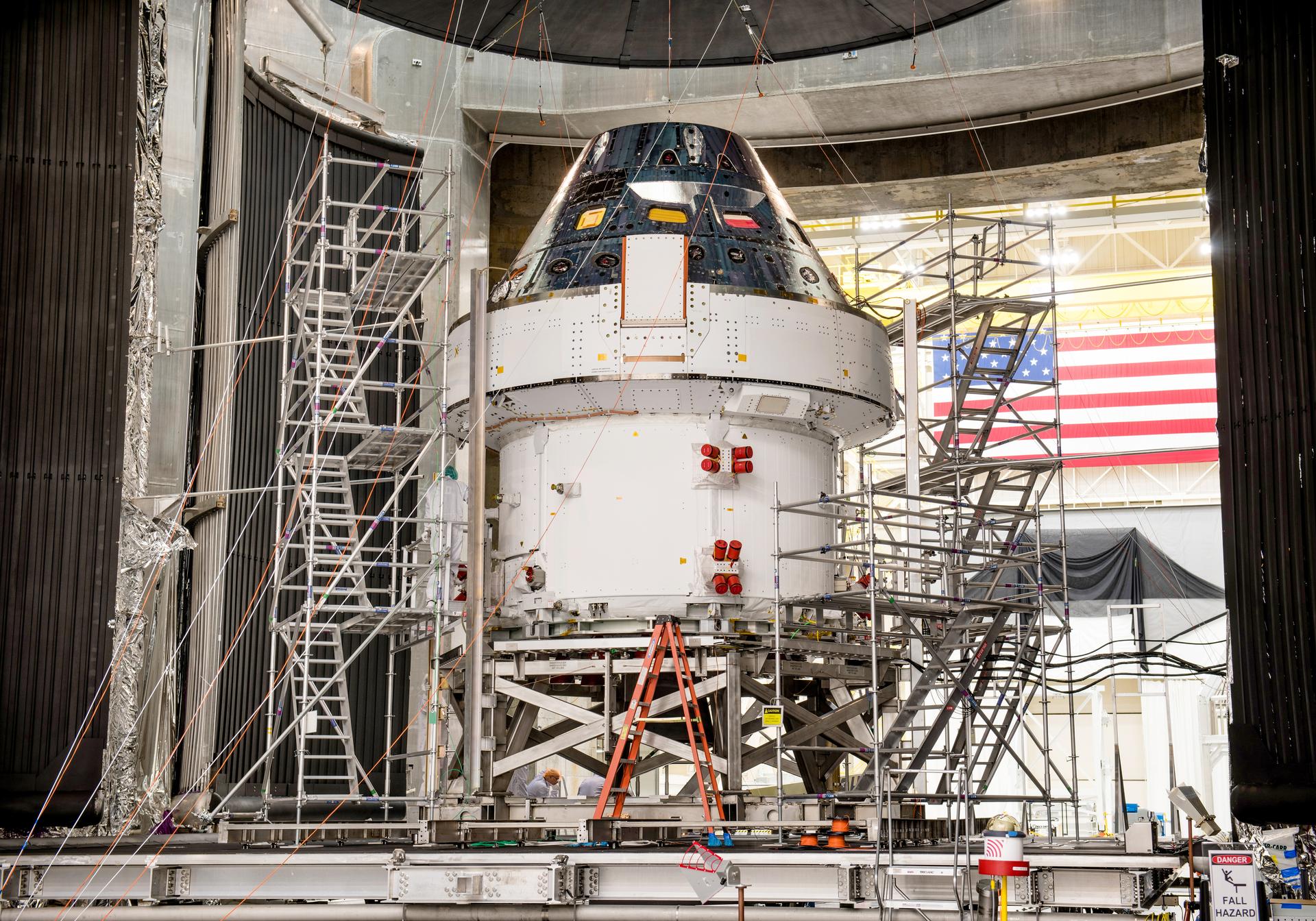Neil A. Armstrong Test Facility
Neil A. Armstrong Test Facility, formerly known as Plum Brook Station, is a remote test facility for NASA’s Glenn Research Center in Cleveland, Ohio. Located on 6,400 acres in the Lake Erie community of Sandusky, Neil A. Armstrong Test Facility is home to four world-class test facilities, which perform complex and innovative ground tests for the international space community.
The Space Environments Complex (SEC) at Armstrong Test Facility houses the world’s largest and most capable space environment simulation facilities. This includes the Space Simulation Chamber, which simulates the thermal and vacuum conditions of space, and provides an environment to test electromagnetic interference; the Reverberant Test Facility, a 100,000 cubic foot reverberant acoustic chamber; and the Mechanical Vibration Facility, a vibration table capable of testing an entire spacecraft in all three axes. Major Orion-related tests have been conducted at the SEC, including the simulated space environments testing of the Artemis I spacecraft.

Environmental Testing
The Orion program has leveraged the unique facilities at Armstrong Test Facility to simulate environments the spacecraft will experience through launch, travel in deep space, and recovery, as well as evaluate the spacecraft’s structure and systems in those conditions.
An international team of engineers and technicians completed three months of rigorous simulated in-space environments testing of the integrated crew and service module from December 2019 to mid-March 2020 for Artemis I. This testing was completed in two phases inside the Space Simulation Chamber.
Integrated Spacecraft Thermal Balance (TBAL) / Thermal Vacuum (TVAC) Testing
The first phase of testing was a thermal vacuum test lasting 47 days, while Orion’s systems were powered-on under vacuum conditions that simulate the space environment. The spacecraft was subjected to extreme temperatures, ranging from -250 to 300-degrees Fahrenheit, to replicate flying in-and-out of sunlight and shadow in space. To simulate these conditions, a specially designed piece of hardware, known as the Heat Flux System, was used to heat specific parts of the spacecraft at any given time. It was also surrounded on all sides by a set of large panels called a cryoshroud that provided the cold background temperatures of space. The testing ensured Orion’s systems perform correctly in extreme flight conditions.
Integrated Spacecraft Electromagnetic Interference/Compatibility (EMI/EMC) Testing
The second phase of testing was a 14-day electromagnetic interference and compatibility test. All electronic components have an electromagnetic field that can affect other electronics nearby. This testing ensured the spacecraft’s electronics work properly when operated at the same time, as well as when bombarded by external sources. The test campaign confirmed the spacecraft’s systems perform as designed, ensuring safe operation for the crew during future Artemis missions.



























